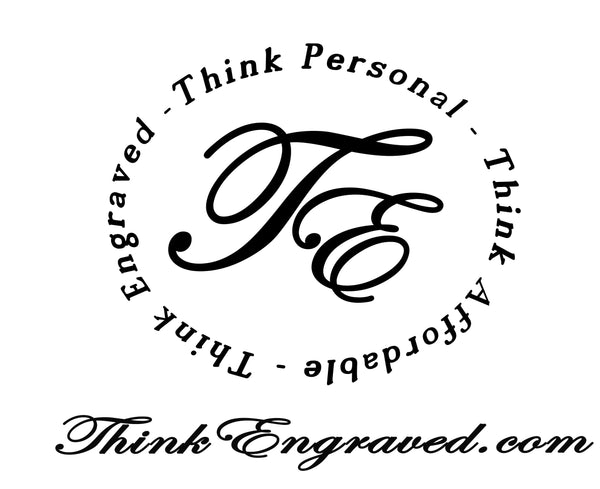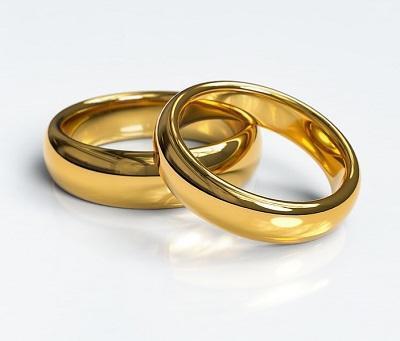
Wedding bands are traditionally exchanged at the wedding, are made out of some expensive metal, and often look similar to your partner’s. In the present, though, I’ve seen a lot of different designs, some matching and some not--women’s rings punctuated with turquoise, and men’s rings carved from wood or even made of rubber.
But, do wedding bands have to match? Honestly, it’s up to you. These days, tradition is hardly a reason to make big decisions. Your love is individual, and your rings should be, too. That individuality, however, doesn’t necessarily mean they look individual--just that they are exactly what you want them to be, whether that be matching or not!
It might be best to go over some pros and cons of matching wedding bands, as well as some other things to consider when making such a momentous purchase. But this decision is, of course, deeply personal, and so a lot of these pros and cons will be based on emotion. Whatever you read that feels right might be the right choice for you.
Pros of Matching Wedding Bands
- Your matching wedding bands could create a deeper sense of unity
- You could have the opportunity to design the bands together, making them match as much or as little as possible
- Depending on how you match them, for instance, if you were going to write your last name or initials, you would be able to easily identify the ring if it went missing
- Not only does the matching set signify to yourself and your spouse that you are unified, but it is an expression of love the world can see as well
Cons of Matching Wedding Bands
- Even though you’re unified as a couple, that doesn’t mean you’re the same person--you might want to express your love with something you, personally, are really excited about wearing
- Some part of the matching set feels a little like ownership: marriage’s negative connotation
- If you want a matching set, that may make it more difficult to match to you or your spouse’s engagement ring
With those thoughts in mind, remember that it’s up to you! If some of the pros outweigh the cons, maybe you have your answer. When I got married, I didn’t even get a wedding band--I only have my engagement ring. I didn’t see the need to spend more money when I already had a beautiful ring. But that’s me! Everyone is different.
There are some things, however, to consider before purchasing the right band for you, matching or not. As with the engagement ring, you want to make sure the wedding band is something that both you and your partner (whether matching or not!) want to wear, hopefully, for the rest of your lives.
Consider the Metal
It used to be tacky to wear different metals near each other, but again, tradition doesn’t rule all these days! If you guys wanted rose gold for the engagement ring and silver for the wedding band, who is stopping you? You could also have a twisted band that includes two different metals! Again, pick what you love.
You can work with gold, platinum, titanium, palladium, silver, zirconium, tungsten, and steel. With platinum and palladium, you’re looking at a white, reflective metal, and palladium is the cheaper of the two. Titanium and zirconium are both strong and hypoallergenic. Tungsten and steel are cheaper options and still very durable.
Something to keep in mind, though, and something you’ve hopefully already considered, is whether or not you are allergic to a specific type of metal. Definitely do what’s best for your life as well as your style.
So, if you want matching rings, consider what your partner is or is not allergic to, what metal works best for both of you, and what works in your price range.
Consider Something Besides Metal
And if metal just isn’t what you want, there are plenty of other band materials out there. My husband’s ring was actually made of polished wood, and like mentioned above, we also have a set of silicone rings that are comfortable and easy to replace if they get lost.
Wood and silicone, however, might not be the best option if you do choose to match your wedding bands as husband and wife, but I could be wrong! Maybe wood will look just perfect next to your yellow gold engagement ring. You never know until you try!

Consider the Color
There are so many ring colors as well as metals out there. I’ve seen yellow gold, white gold, rose gold, and even chocolate gold. Green gold also exists, and it’s only a slight green tint, but it is something to consider. There are also dark grey and black options as well. Whatever fits your personal style.
You also have the option to mix colors, which would allow for more diversity in your wardrobe. Some rings have swirls of different colors, a candy cane stripe pattern, or even a long horizontal stripe. It could be fun to give yourself more options than just one.
There is also the finish to keep in mind--some rings are finished shiny, some matte, some satin, and some hammered.
So, if you want matching rings, make sure you are interested in the same colors and finishes! Otherwise, you might want to consider having your own individual styles of wedding bands.
Consider Diamonds or Other Stones
I have two friends who chose turquoise centers surrounded by diamonds. I know others that have picked other stones, like sapphires and rubies and emeralds--most likely a stone that has a personal meaning to them.
It’s traditional that an engagement ring has diamonds, but you don’t have to stick with diamonds if you don’t want to! If you do, however, it could be fun to have the wedding band sport a different stone you’ve been interested in, so you still have a diamond in the engagement ring and something else for the wedding band.
Stones can be tricky if you’re planning on matching your wedding bands, perhaps even trickier than matching metals. If you’re a less bling-y person, for example, you might opt to not include a stone.
If you like the bling, you could think about some innovative ways to match your rings:
- Use each other’s birthstones. That way you have a more intimate piece of your partner with you wherever you go.
- Use each other’s favorite color.
- Use the color of your partner’s eyes.
- If you bonded over sports, you could use the colors of your favorite sports team.
Whatever you choose, it could be fun to get creative. Matching doesn’t have to be identical--it could be a matching idea!
Consider the Stone Shape
Along with innovative color ideas, you could also consider how you’d match your shapes. The shape holds the stone (if you want a stone) so this is something to consider when crafting or choosing your rings.
Cuts of different stones are usually traditional. The most popular cuts are princess (square), round, cushion (rounded square or rectangle), marquise (an almond shape with two pointed ends), emerald, radiant (octagon with prism qualities), pear shaped, heart, oval, and asscher (similar to radiant but with straighter lines).
The cuts listed above are all ways to shape the actual stone, but there are settings for diamonds and stones to fit into. If you go the setting route, then you’ll basically be able to choose any shape you want.
There are some beautiful options out there, and you can personalize them whether you choose to have matching rings or not.
For a wedding band, though, I would recommend keeping the shape simple. Most likely, the engagement ring has the most eye-catching details, and you don’t want to overwhelm yourself. But, of course and as usual, the world is your oyster: do whatever you want!

Consider the Band Shape
The band can also have an interesting shape. You can twist the metal, shape it like a spiral, and include a point, among other options. It would be a good idea to research some different shapes, as this is a point that can easily be looked over.
Another thing to consider is the band width and depth. The width is important for the partner with the engagement ring to keep the look balanced. But the depth is interesting, because it can change the shape of the band.
For example, you could have a circular band, or traditionally called a halo band, or you could have a flat band, or D-shaped, or almond shaped. It’s really quite detailed, and something to consider.
While these details might seem inconsequential, these are the details that could make your rings match, even if the other details don’t. You can be creative! Match the bands but not the stones, match the stones but not the shapes...whatever works best for your relationship. And again, if you don’t even want to match, you don’t have to.
In Conclusion
I can’t reiterate enough how important it is to remember that this is a completely individual choice. All the options I’ve written here are simply for you to consider as you make this decision. Whatever you choose, make sure it works for you and for your relationship.
More articles you will love
Top 9 materials men's wedding bands are made of ( Find your favorite )
Can Promise Rings be Any Ring?
Is Stainless Steel Jewelry Safe to Wear
Do you propose to a man with a ring?

